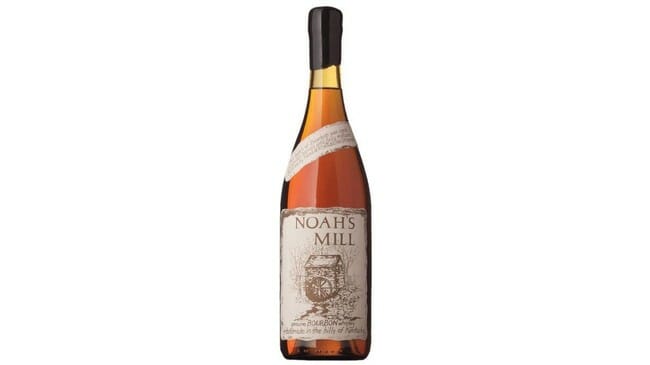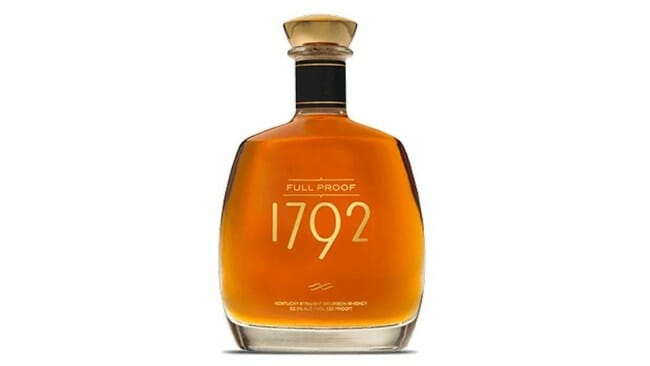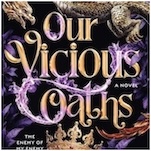What Are the Best Values in Overproof Bourbon Today?
Photos via Jim Beam, Maker's Mark, Brown-Forman, Wild Turkey, Willett, Luxco, Barton 1792, Buffalo Trace, Nelson's Green Brier Distillery, Heaven Hill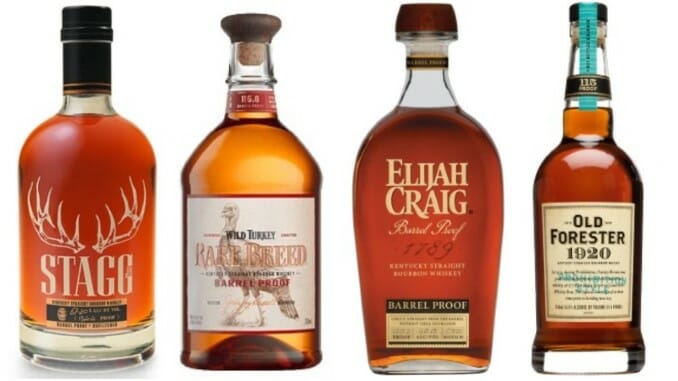
Cocktail Queries is a Paste series that examines and answers basic, common questions that drinkers may have about mixed drinks, cocktails and spirits. Check out every entry in the series to date.
The rise in popularity of cask strength/barrel proof/overproof bourbon in the last decade speaks to the maturation of the American whiskey drinker market, as well as an influx of novice bourbon seekers who are understandably equating “stronger” with “better.” Suffice to say, that would be a significant oversimplification of the world of American whiskey, but regardless of the rationale, it’s safe to say that overproof and barrel proof whiskey is having a big moment in the U.S. right now, with many companies introducing new, high-octane brands. But how do you calculate bourbon values?
Unfortunately for the consumer, those high proof brands do have a tendency to go hand in hand with soaring price tags, which have only gotten higher in 2023. One of the primary reasons, in fact, for the influx of new cask strength bourbon brands (especially non-age-stated ones) is that distilleries have realized it’s a way they can premiumize their product lineup, allowing something such as a bottom shelf value brand to take on a second life as a cask-strength, sought after bottle. Drinkers have illustrated that they’re often willing to pay a premium for a high proof, and spirits companies have been eager to take advantage of that premium price point.
The obvious question, then, becomes “What are the best actual values in overproof bourbon?” Note, I could have made the query “the best values in cask strength bourbon,” but that would have been less genuinely useful to you, the reader. Why? Well, it’s because the cask strength or barrel proof (they mean the same thing) of bourbon from various distilleries varies wildly, based on the distillery’s choices in factors such as distillation strength and barrel entry proof. Where a distillery like Heaven Hill may choose to put its whiskey into a barrel at 125 proof, and have it emerge as 140 proof a number of years later, others such as Wild Turkey and Maker’s Mark believe that lower entry proof points equate to a greater quality of flavor. Let us then focus simply on “overproof” brands in general, which is to say, bourbons of 50% ABV (100 proof) or greater strength.
In other words, when you’re looking for strong bourbon, which brands are giving you the best bang for your buck? Here are our favorites that fit the bill, arranged roughly in terms of price.
Old Grand Dad 114Distillery: Jim Beam
ABV: 57% (114 proof)
Price: $25-35
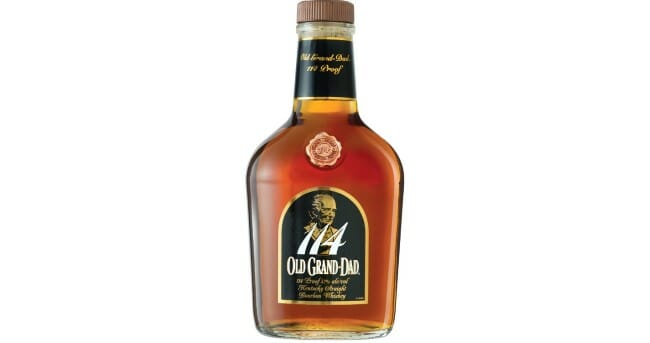
Jim Beam, monolith that it is, has no shortage of extreme budget bourbons, but we’ll be frank when we say that we’re not always fans of the Beam flavor profile for really young or low-strength whiskey, as is found in brands such as Old Crow or the standard Old Grand Dad. OGD 114, on the other hand, is one of the most extreme values in the entire bourbon market, once you factor in the proof and a respectable amount of aging, rumored to be 5-6 years. It’s very, very hard to beat this from a “bang for your buck” perspective, and it’s old enough and strong enough that the Beam flavor profile is rounding into form, yielding a flavor bomb that can often be yours for as little as $25. Try finding another moderately aged bourbon close to cask strength for $25—it’s not going to happen.
The Old Grand Dad lineup is made with Beam’s high-rye (27% rye) mash bill, which yields a spicier and slightly wilder whiskey than the juice that goes into the standard white label, with pronounced notes of citrus, pepper and slight leather, along with the corny sweetness and roasted peanuts you expect from younger Beam bourbons. This is an excellent way for drinkers to make a first foray into overproof bourbon in general, to perhaps dip a toe into the more bombastic side of the spectrum before exploring more barrel proof whiskeys. It’s not the only Beam bourbon we’ll be talking about on the mid-shelf, either.
Old Ezra 7 Year Barrel StrengthDistillery: Luxco/Lux Row Distillers
ABV: 58.5% (117 proof)
Price: $45-60
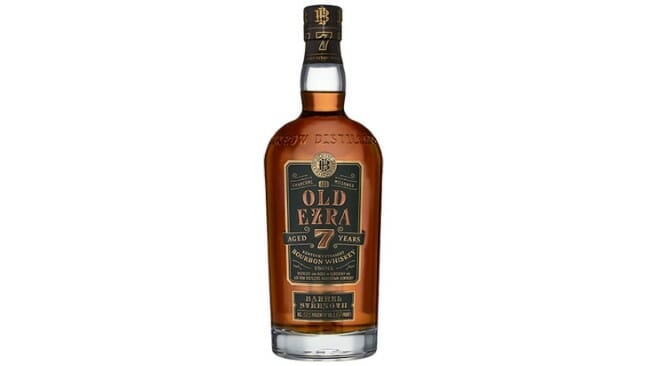
Old Ezra 7 Year Barrel Strength is a bit of a confusing brand, as its MSRP is reportedly still in the $40-50 range, but actual pricing in the wild often seems to be quite a lot higher—look online, and you’ll find a lot of retailers trying to charge $100 for this sourced bourbon from Lux Row Distillers. Regardless, what we have here is a sourced, barrel proof bourbon with a moderate age statement, sourced from Kentucky, which points squarely at a few of the usual suspects. If you’re finding it at MSRP, that equates to a pretty good deal in the current market.
Old Ezra brings to bear a pretty traditional suite of bourbon notes, with ample vanilla, caramel, spicy oak and brown sugar. You also will get some sweeter red fruit notes and more toasted tones, with impressions of buttered bread and cinnamon sugar. Like many other products in the Ezra Brooks lineup, it’s a very conventional and high-quality example of Kentucky bourbon flavors. Just don’t get roped into paying $100 or whatever for a bottle of this.
Wild Turkey Rare BreedDistillery: Wild Turkey
ABV: Roughly 57.5% (115 proof)
Price: $50-60
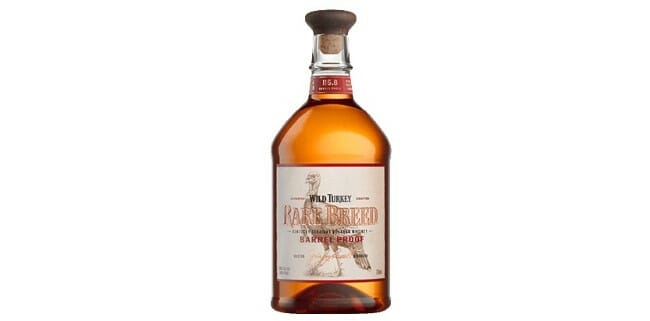
Not to be outdone by Beam, Wild Turkey also offers consumers a chance to dip a toe into barrel proof bourbon for around the $50 mark via Rare Breed, a whiskey that the true bourbon geeks know and love. This one is a showcase for the brand’s low barrel entry proof, which is a technique that some distilleries believe yields a more potent flavor profile. That means this small-batch mingling of 6, 8 and 12-year-old bourbons drifts a bit in terms of proof, although it’s usually around 112 to 117, and that is true barrel proof for this distillery—no added water at all.
This yields a classic Wild Turkey flavor bomb, which echoes some of the flavors of the flagship 101, but also transforms them substantially via additional aging and proof. This can be a very spicy and rich dram, with lots of vanilla, caramel and citrus that is made more complex with notes of mint, leather and tobacco/cigar wrapper. It packs a huge amount of flavor into that particular proof point, and is capable of going toe-to-toe with significantly bigger bourbons. Wild Turkey stakes a claim to being one of the best bourbon distilleries in terms of value by producing whiskeys that are exemplary additions in each of these price tiers.
Knob Creek Single Barrel ReserveDistillery: Jim Beam
ABV: 60% (120 proof)
Price: $50-60
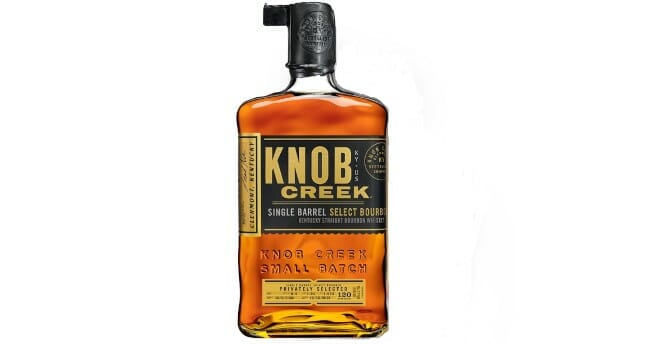
The mid-shelf truly is where Beam’s economies of scale shine the brightest, and where they’re able to offer values that almost no other competitor can match. The Knob Creek range in general is full of value—the 100 proof flagship 9 Year regained its age statement in 2020 and has an MSRP of $35, which means serious value for a well-aged Beam bourbon. But drop another $10 and you can get Knob Creek Single Barrel Reserve, with its 120 proof that is more or less cask strength! This is simply the best value way you can dip a toe into well-aged, overproof bourbon, and it can get even better if you’re able to find store picks, which can have age statements as high as 14 or 15 years.
The extra 20 points of proof transforms the Knob Creek flavor profile nicely, drawing out deeper notes of maple syrup and molasses in many of these single barrel bottles, while also highlighting jammy red fruit notes and a rainbow of caramelized sugar impressions. For less than $50, it’s very hard to find something else that is as rich and characterful.
Maker’s Mark Cask StrengthDistillery: Maker’s Mark
ABV: Roughly 55-57.5% (110-115 proof)
Price: $50
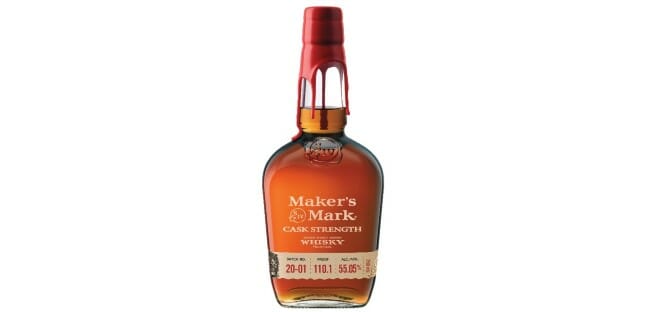
The standard Maker’s Mark Bourbon is itself a very good value ($20-25) as an introductory level wheated bourbon, standing alongside Heaven Hill’s Larceny as one of the two most obvious and affordable ways to explore wheated bourbon without having to shell out the sadly (and pointlessly) inflated prices for Buffalo Trace’s W.L. Weller. But Maker’s Mark Cask Strength is arguably an even bigger value, being one of the most affordable cask-strength bourbons on the market. Like Wild Turkey, Maker’s Mark uses a lower barrel entry proof, which means this one isn’t quite the beast that some other distilleries release as their cask strength offerings, but that fits well with Maker’s reputation for being approachable and friendly whiskey.
The barrel proof expression of Maker’s takes the familiar wheated bourbon flavor profile and sends it into overdrive, yielding massive amounts of sweet vanilla, butterscotch, red fruit, creme brulee, cream of wheat and banana bread. This is a big, decadent sort of bourbon that you might drink alongside a scoop of vanilla ice cream, or a pile of Nilla Wafers and banana pudding.
Moreover, in the $70-80 range you can also find bottles of Maker’s Mark Private Select, which are cask-strength bottles that are additionally conditioned on a variety of “finishing staves” to impart exotic new flavors. They’re a bit more expensive, but if you enjoy the Cask Strength this adds a whole new layer of variation to them.
Noah’s Mill BourbonDistillery: Willett
ABV: 57.15% (114.3 proof)
Price: $50-60
This is a brand that seems to swing back and forth in terms of how much whiskey geeks appreciate it, but it is reliably unique enough to stand out. It’s a product of Willett, but not one that contains any of their own whiskey distillate—they’ve been actually distilling their own product since the early 2010s, but this remains a sourced brand from unknown distilleries. In fact, Noah’s Mill is a blend of sourced bourbons of varying ages, often reported as “between 4 and 20 years old,” although we would suspect it’s primarily younger whiskey. That makes Noah’s Mill perhaps not quite the pure value of something like Wild Turkey Rare Breed, but few things are. It makes up for the lack of a concrete age statement with its solid proof point and bombastic flavors, although the brand often does seem to be an acquired taste.
Fans of Noah’s Mill often note its pleasant combination of nutty and spicy notes, which to us hints at a possible origin point of Beam or Heaven Hill, at least for some of the whiskey involved. Cinnamon, allspice and roasted pecans are classic notes here, along with walnut, caramel and hints of darker fruit or berries. It remains a punchy, fairly affordable way to experience the blending prowess of the folks at Willett, without paying the higher prices for their cask-strength Family Estate whiskeys.
Stellum BourbonDistillery: Barrell Craft Spirits
ABV: 57.49% (114.98 proof)
Price: $55
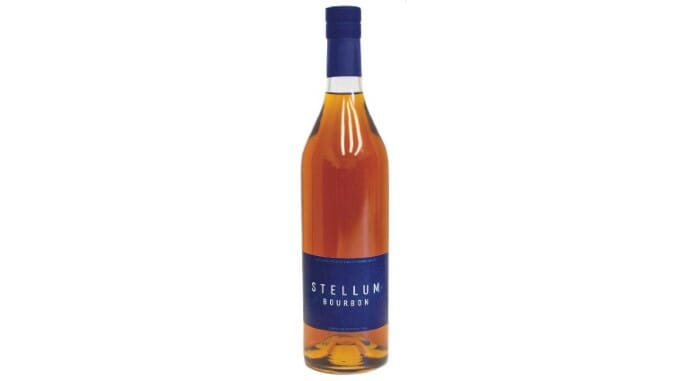
The Stellum line from Barrell Craft Spirits is meant to give drinkers access to the Barrell-style blending portfolio—which brings together bourbons from Indiana, Tennessee and Kentucky—while keeping the cask strength punchiness, but at a significantly lower price point that puts it in competition with the other best values out there in barrel proof bourbon. They do this, unsurprisingly, by losing the age statement—this is a younger bourbon blend as a result, although most of it is reportedly still a respectable 5-6 year old bourbon from MGP, with older juice in the blend all the way up to 16 years. In short, it’s all about giving you significantly more bang for your buck than in the regular Barrell series, which usually carries MSRPs of $90 and above. This one proves to be well-rounded and very approachable for the proof. As we wrote when first tasting it:
On the nose, there’s a few different distinct things happening here at once. My immediate, first impression is nutty—lots of butter pecan and hints of peanut butter, into lots of caramelized sugars that favor toffee. However, this is also quite spicy on the nose, with sweet spice notes of cinnamon, allspice and cola spice, as well as a bright red fruity note that evokes the tartness of cranberry. Importantly, it avoids being overtly hot on the nose for the ABV, which is an obvious concern with a blend that is younger than the typical Barrell Bourbon batch. All in all, this smells both sweet and spicy, with flashes of fruity and nutty highlights. On the palate, the fruitiness comes out to play a bit more—I’m getting fresh green apples that are slightly tart, along with tart cherry. Overall, the acidity seems to be a bit on the higher side than most, but it works well with the fruit flavors here. The sweet spice is present in a big way here as well, combining cola spices with more of a peppery/chile spiciness. At the same time, there’s also considerable sweetness, evoking vanilla pudding/wafers. As on the nose, it strikes me as a lively balance between sweetness (this is fairly sweet bourbon), spice and fruit, and it remains pretty easy to drink neat for the proof as well.
1792 Full ProofDistillery: Barton 1792
ABV: 62.5% (125 proof)
Price: $50-60
This isn’t quite true “cask strength,” but at 125 proof it might as well be. The “full proof” in the name refers to the maximum proof at which bourbon is allowed to enter a newly charred barrel according to U.S. law, which is indeed 125. Basically, this non-age-stated (said to be more than 8 years) expression is meant to be Barton’s “blow the doors off” entry in terms of bombastic flavor profiles, calculated to appeal to the “proof hounds” among bourbon drinkers. And that is indeed the drinker who is most likely to go nuts for 1792 Full Proof, as you’ll see some criticism of this brand online from those who find its ethanol profile to be too harsh or aggressive. It’s a bourbon that benefits in particular from allowing it some time to open up, both in the bottle and in the glass after pouring, so please note that your experience may be considerably different after it’s been in the glass for 20 or 30 minutes.
As for the profile, Barton’s high-rye bourbon mash bill has a seemingly unique ability to produce whiskeys that vary significantly from brand to brand, sometimes coming across as sweeter and more fruity, and other times drier and more spicy. Full Proof hits all of these notes at once, with fruit elements of apple and citrus comingling with big rye spice, assertive heat, baking spices and caramelized sugars. It’s a very bold pour, so perhaps reserve this one for a time when you’re feeling adventurous.
Stagg Jr.Distillery: Buffalo Trace
ABV: Roughly 65% (130 proof)
Price: $60-70
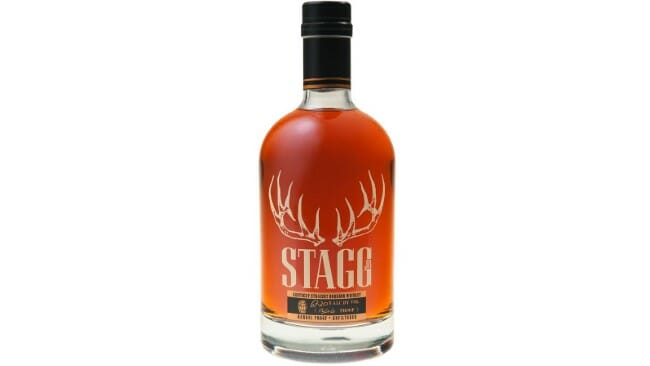
Like so many other Buffalo Trace brands, Stagg Jr. (now just called “Stagg,” as opposed to George T. Stagg) comes with the massive, unavoidable asterisk—it’s going to be hard to find this at MSRP. If you’re scouring online for bottles, package stores will be more than happy to gouge you to the tune of $300 or more for Stagg Jr., thanks to the mania for BT products that has made even this one—which was intended to be the “value” way of getting cask-strength BT bourbon—into white whales for bourbon geeks who are willing to pay any absurd price. You want our advice? Don’t pay secondary prices for this, or anything else. However, if you live in the right place (like somewhere with state-run liquor stores), you may still have an opportunity to buy this whiskey at MSRP. And at MSRP, it actually does remain a remarkably good deal—BT’s answer to the likes of Elijah Craig Barrel Proof, minus the impressive age statement. With that said, Stagg Jr. is still reportedly aged a more than respectable 8-9 years, presumably in the higher parts of BT rickhouses, which helps produce the soaring proof point. It usually lands right around 130 proof, although individual batches have swung as low as 126 and as high as 134.
Those who don’t enjoy Stagg Jr. will sometimes label it as too hot, or overly oaked in some cases, and it does have a tendency to be aggressive in both of those arenas. This is a bombastic bourbon with a high volume of flavor intensity, perhaps the most boisterous in the entire BT lineup. That means the usual BT flavor profile is here as well, turned up to 11, with loads of caramel, cherry and vanilla duking it out with baking spice, chocolate, brown sugar and smoke. It’s certainly something you won’t regret trying, provided you can get it at a fair price.
Old Forester 1920 Prohibition StyleDistillery: Brown-Forman
ABV: 57.5% (115 proof)
Price: $55-60
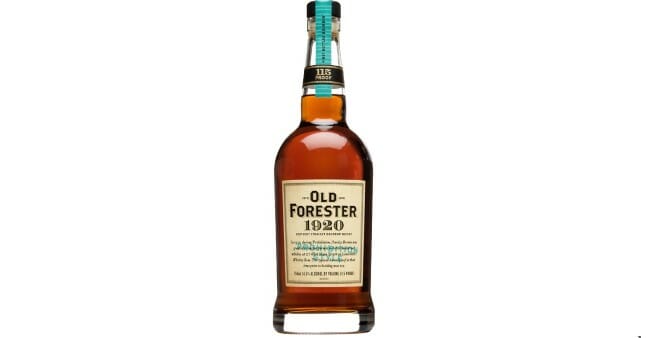
You won’t have to look far to find whiskey geeks who adore this particular bourbon, which seems to have been anointed by most as the crown jewel of Old Forester’s Whiskey Row series. That’s not just down to taste, but also value—this one combines an attractively high proof point with explosive flavors and a price tag that is pretty generous to boot. It begs to be used in special occasion cocktails, although be warned that doing so may put you on the floor very quickly.
All the bourbons in the Old Forester family are made from the same mash bill and essentially the same barrels, being defined by different periods of aging, proof points and positions within the Brown-Forman warehouses. The 1920 Prohibition Style just seems to be a sweet spot—it packs almost all the flavors that people love about the distillery’s yearly Old Forester Birthday Bourbon releases, but at a far more affordable price. You get tons of brown sugar, juicy maraschino cherry, baking spices, cocoa and marshmallow, all for giving up a specific age statement. And when it tastes this good, we don’t mind doing that one bit. Here’s hoping this one never gets jacked up in price, because as the bourbon market continues to get more expensive, 1920 Prohibition Style has only seen its relative value increase in the last 5 years.
Belle Meade ReserveDistillery: Nelson’s Green Brier Distillery
ABV: 54.15% (108.3 proof)
Price: $60-70
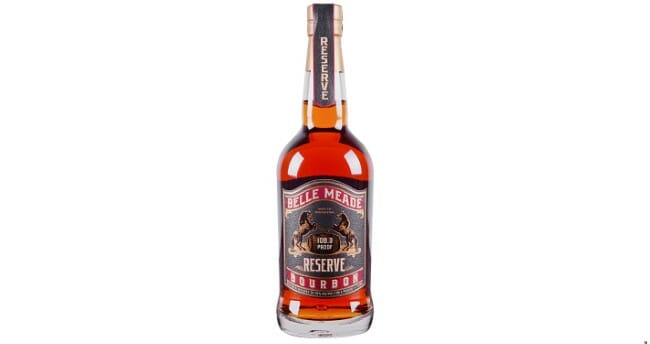
There’s a whole lot of bourbon from MGP (Midwestern Grain Products) of Indiana on the whiskey market, but you’ll occasionally get roped into paying an arm and a leg for it, especially as the proof point rises. This makes Belle Meade Reserve an attractive middle ground—it’s not quite at the barrel proof that a lot of people are craving, but it’s not far off from it either. Neither does it have a concrete age statement, but it’s older than most, and is a good source of the high-rye MGP bourbon that a lot of whiskey geeks crave these days. The brand was once “cask strength” but eventually standardized to 108.3 proof in an effort to make batches consistent.
That means, for far, far less than the likes of Kentucky Owl you can get a blend of 7 to 11-year-old high-rye MGP bourbons from Belle Meade. It likewise has the overproof punch to be very full flavored, while its lower profile keeps the price tag around $65. For that, you get pronounced flavors of old oak, stone fruit, cornbread, cocoa, mint and more. If you know that you enjoy MGP’s bourbon, and want a well-aged, overproof expression, this remains possibly the best value play out there.
Elijah Craig Barrel ProofDistillery: Heaven Hill
ABV: Roughly 60-65% (120-130 proof)
Price: $70
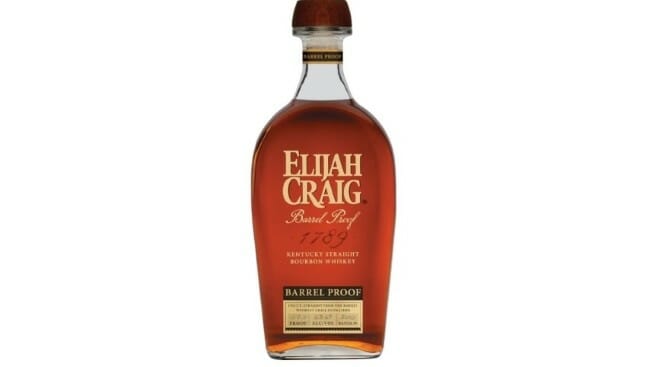
Elijah Craig Barrel Proof, or simply ECBP, has long been recognized as one of the best pure values in bourbon, and that’s still true, even after the price has crept up in recent years from the $50 range (man, those were the days) to more like $70. Despite that, there’s still very few barrel proof offerings that represent such a good value, particularly when you include the 12-year age statement and proofs that are occasionally 130 or more.
Released in three different batches every year, there’s a fair amount of variation in every ECBP release, but they’re pretty much all awesome in their own ways. Some are hotter, or more oak forward, but all have an intense caramelization and forever-lasting finish that explodes with every baking spice note imaginable. For our money, the last release (C921) was particularly excellent, conveying rich, sweet brown sugar intensity. As I wrote when reviewing C921 not too long ago:
On the palate, this is again wonderfully rich and luxurious in its flavors. It’s quite sweet off the bat, with lots of candied orange, vanilla frosting, and some darker black cherry pie filling. The oodles of caramel present on the nose likewise rush to the forefront, along with huge amounts of cinnamon, which is more of a “cinnamon churro” and less “cinnamon red hots” in presentation. The classic Heaven Hill nuttiness peaks in with pecan pralines, and the ethanol gives it a solid, chest-warming heat that is still fairly gentle on the palate compared to relative bruisers like A120.
Jim Vorel is a Paste staff writer and resident liquor geek. You can follow him on Twitter for more drink writing.
